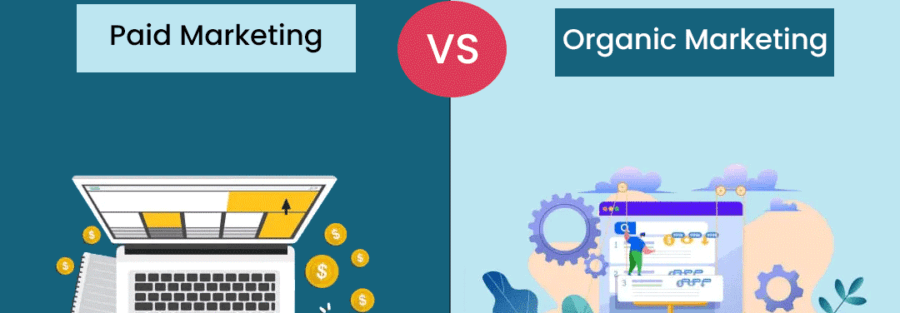In the digital age, increasing your online visibility is critical for brand growth. Two major marketing strategies—organic marketing and paid marketing—can help you achieve this. While each has its strengths, combining the two can amplify your results.
What Is Organic Marketing?
Organic marketing uses non-paid tactics to attract and engage your audience. By focusing on valuable content, organic strategies create sustainable visibility and foster trust with potential customers.
Key Tactics of Organic Marketing:
- Search Engine Optimization (SEO): Optimize blog posts, videos, and website content to rank higher on search engines like Google.
- Social Media Engagement: Publish and share valuable, unpaid posts on platforms like Instagram, Facebook, and TikTok.
- Video Marketing: Use platforms like YouTube to publish search-friendly videos.
Benefits of Organic Marketing:
- Cost-Effective: Requires less ongoing investment compared to paid strategies.
- Builds Long-Term Relationships: Customers trust organic content because it feels authentic.
- Sustainable: Keeps generating traffic over time, even without additional spending.
The Role of Keywords in Organic Marketing
Effective organic strategies rely on keyword research. By targeting phrases your audience frequently searches for, you can ensure your content is discoverable and relevant.
What Is Paid Marketing?
Paid marketing involves running ads on platforms like Google, Facebook, and Instagram. Unlike organic methods, paid campaigns focus on immediate visibility and driving specific conversions.
Popular Paid Marketing Tactics:
- Pay-Per-Click (PPC): Ads displayed on search engines, where you pay each time someone clicks.
- Social Media Ads: Sponsored posts that target specific audience demographics.
Benefits of Paid Marketing:
- Immediate Results: Your content reaches the audience instantly without waiting for organic discovery.
- Targeted Campaigns: Allows precise targeting based on demographics, behavior, and interests.
- Scalable: Adjust budgets and campaigns to meet your goals in real time.
Key Differences Between Organic and Paid Marketing
| Feature | Organic Marketing | Paid Marketing |
|---|---|---|
| Cost | Low, with higher time investment | High, requires direct financial investment |
| Time to Results | Long-term | Immediate |
| Focus | Building trust and relationships | Driving conversions and sales |
| Sustainability | Sustainable | Stops when the budget runs out |
Why Use Both Organic and Paid Marketing?
The most effective digital marketing strategies blend organic and paid tactics. Here’s how:
- Boost Organic Content with Ads: Use paid ads to promote high-performing organic content and reach a wider audience.
- Test Campaigns Quickly: Paid marketing allows you to experiment with messaging, while organic strategies solidify your long-term presence.
- Sustainable Growth: Paid campaigns drive short-term results, while organic efforts ensure long-lasting visibility.
Conclusion
Both organic and paid marketing play essential roles in a successful digital marketing strategy. Organic marketing builds trust, fosters relationships, and creates a sustainable presence, while paid marketing drives quick results and conversions.
By understanding their differences and leveraging both effectively, your brand can maximize its online visibility and growth.
Ready to supercharge your marketing strategy? Start balancing organic and paid marketing today!




